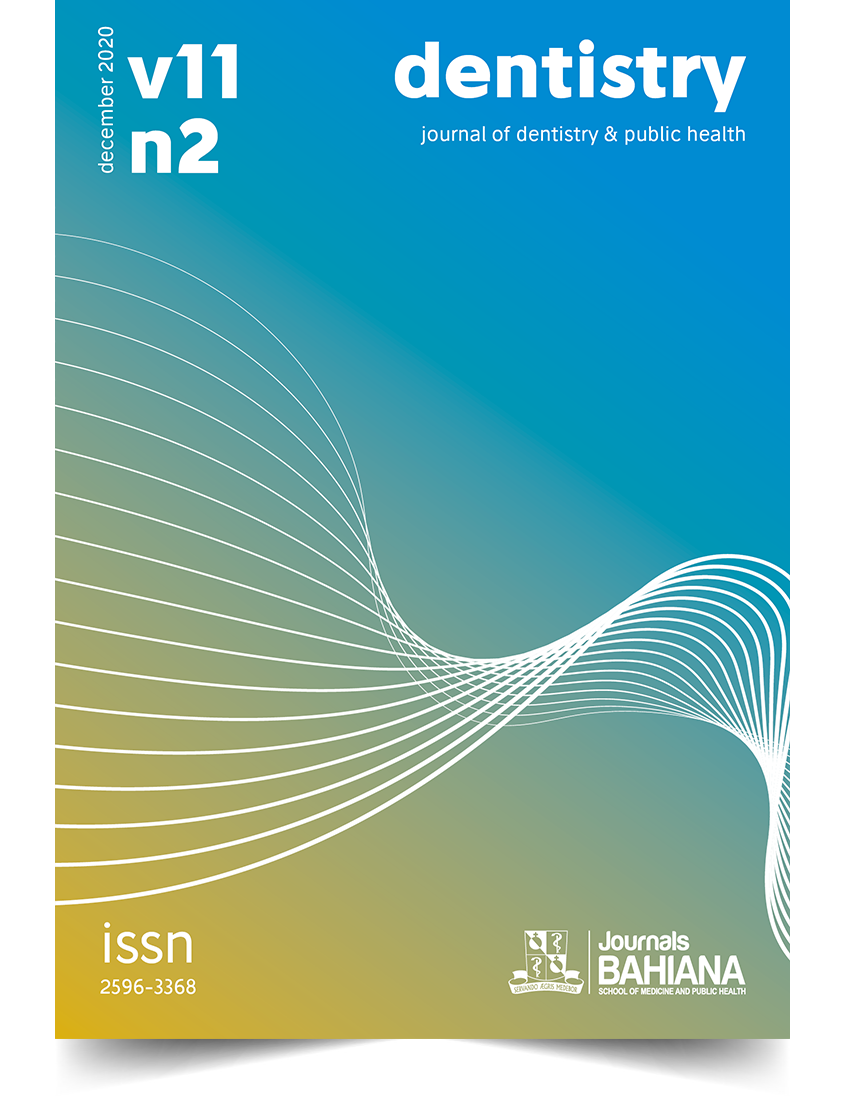In vitro evaluation of the accuracy of a new foraminal electronic locator
DOI:
https://doi.org/10.17267/2596-3368dentistry.v11i2.3097Keywords:
Endodontics. Odontometry. Tooth apex.Abstract
OBJECTIVE: To evaluate, in vitro condition, the accuracy of the electronic readings obtained through the foraminal electronic locator iRoot Apex. METHODS AND MATERIALS: Thirty-one uniradicular human mandibular premolars had their accesses, cervical enlargement and real length measurement performed in a standardized way. Electronic measurements were performed at points 1.0, 0.5 and 0.0 marked on the device's dispaly and compared to the actual measurements at 1mm, 0.5mm and at the apical foramen, respectively. The data were tabulated and analyzed using the ANOVA and Bonferroni tests with a 5% significance. RESULTS: The results were calculated as a function of the absolute values of the average errors and the accuracy (± 0.5 mm) in each measurement reference, obtaining respectively: 0.19 mm and 96.8% (0.0), 0, 21 mm and 96.8% (0.5), 0.34 mm and 74.1% (1.0). Significant differences were observed only between the most apical points (0.0 and 0.5) and the measurements made in marking 1.0 (P <0.05). CONCLUSION: in the conditions of this study, the iRoot Apex® device showed high accuracy, however, the electronic measurements performed in point 1.0 of the device are less accurate than the electronic measurements obtained in the foramen or close to this anatomical point.



